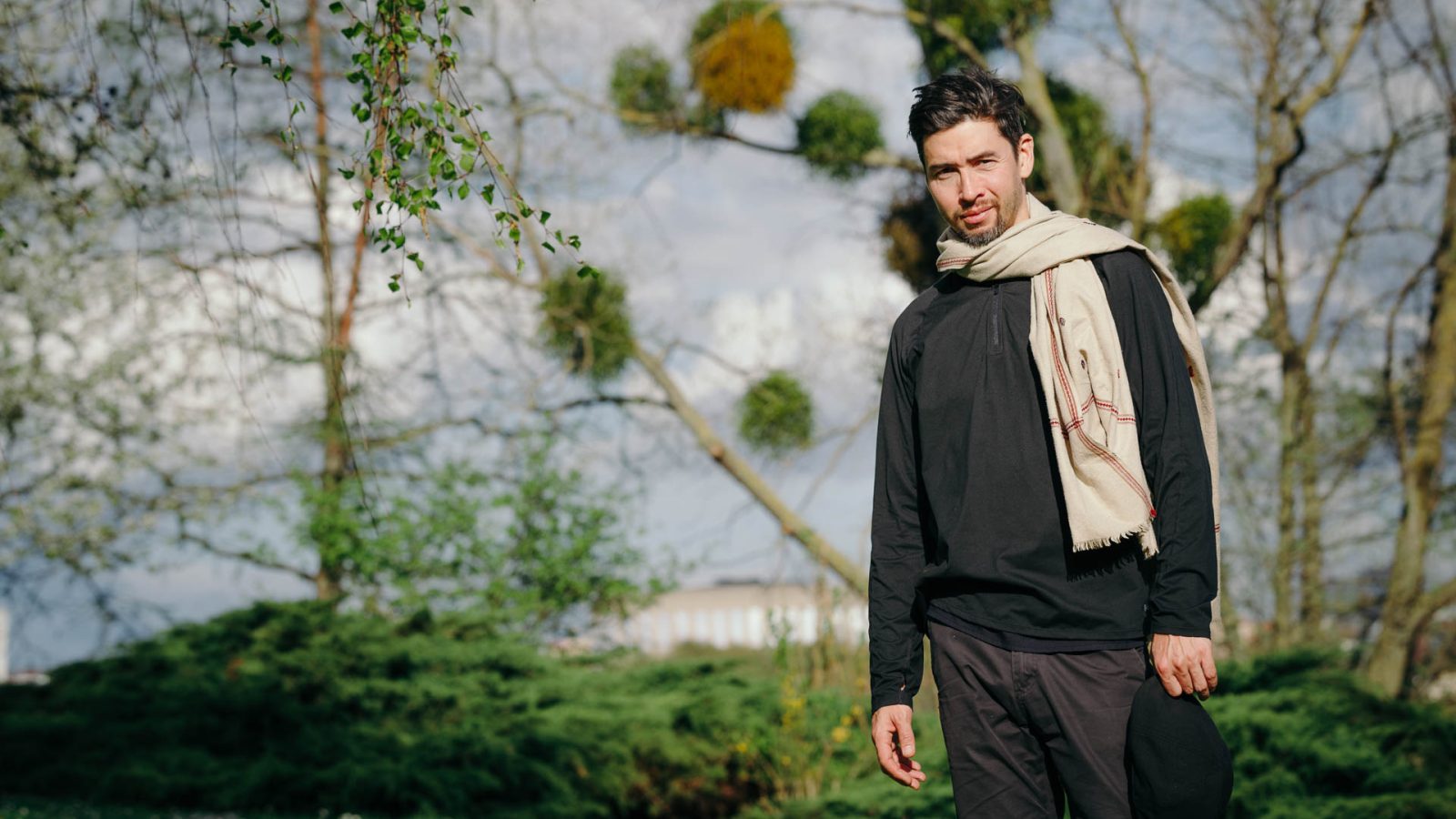
Miles Okazaki discusses reimagining the Thelonious Monk songbook for solo guitar
“Working with Monk brought me close to a musical architect of the highest order.” So said John Coltrane to Downbeat in 1960, encapsulating just how highly regarded the great jazz pianist and composer Thelonious Monk was among his contemporaries, even then. In the years that have followed, Monk’s back catalogue has become widely known, his most popular compositions a pillar of the jazz jam as well as the tools of educators to inspire their aspiring young students. Yet jazz guitarist Miles Okazaki recently realised that Monk’s complete songbook (based on the list from Steve Cardenas and Don Sickler’s the Thelonious Monk Fake Book) had never been reimagined for solo guitar. His new project Work does just that, revealing in great detail the endearing qualities of Monk’s writing and giving guitarists everywhere a new, more direct way to relate to those works. We caught up Miles to discuss his project in greater depth, learning what it taught him about the songs themselves and his abilities as a player. For an in-depth analysis of his process, check out Miles’ liner notes on his website.
What did arranging the complete compositions of Thelonious Monk for solo guitar teach you about the compositions and the man behind them? Did you uncover any compositional tendencies, or sound signatures if you will, in Monk’s writing?
MO: ‘I didn’t make arrangements, in terms of writing anything down. But I practiced each tune enough that a kind of arrangement arrived on its own. The main thing is that Monk’s music, like Bach, works on any instrument because the structures are so strong and clear. Monk has plenty of signature sounds, voicings that you encounter many places and things like that, but they come out different on the guitar, which has its own vibration.’
Which of the seventy compositions was the most complex to record? Are we right in assuming each track is a complete, unedited take?
MO: ‘The hardest one that I can think of is “Pannonica.” It might not sound very hard on the record, and it’s only one chorus, but I made a challenge to myself to play any notes that were possible with natural harmonics and mix those in with the other notes to make melodic lines. This presents some real problems with dynamics, as some of the higher harmonics are very hard to get without making some gnarly pops with the articulation. Another is “Epistrophy,” which has two parts that are quite hard to keep going. I actually left in the part where the whole thing falls apart, because I like to keep the rough edges in there. Others, like “Round Midnight,” are hard just because they are so well known and there is a lot of history to deal with.’
For those unfamiliar with arrangement and rearrangement, what do those processes typically involve for you? What were the key materials and tools for you to confidently and accurately rework each of these Monk compositions?
MO: “I prefer ‘translation’ to ‘arrangement.’ Arrangement implies some kind of alteration of the original, and I don’t actually do much of that. I am basically trying to get the information from one instrument to another, and this process is a filter which creates a certain character to the tune. Shakespeare in French is still Shakespeare, but the vibe will be different. My choices are almost always rhythmic – what kind of feel, what kind of groove, what tempo, fixed or elastic beat, and how far to stretch, which sometimes is quite far.”
You’re based in New York, a city long renowned for its jazz scene and where Monk made his name. What do you enjoy most about living and performing in the city? Have you ever visited another city where you’ve felt as comfortable and inspired?
MO: ‘I’ve been in NYC for 21 years, and there are amazing musicians playing here every night. I can’t say I always take advantage of this – a lot of times when I’m home I just practice and hang with the family. But there’s nothing like a constant influx of young killers moving in to light a fire under your ass and keep things moving forward. The sheer number of musicians around here ensures that some kind of evolution will happen. There are many other cities that I enjoy being in for a while, but I’m always relieved to return to New York and inspired by my mentors, peers, and younger players coming into the scene.’
In the years prior to the recording of Work, you hadn’t felt your skill set sufficiently complete to tackle these recordings on a solo instrument. How important was it to find your own style or voice before attempting a project of this grandeur? What might the outcome have been had a 21-year-old Miles Okazaki attempted the same feat?
MO: ‘21-year-old me would have been a disaster. And 31-year-old me would have been pretty bad as well. Who knows, maybe this one isn’t really up to par either, but I’m at a certain point when I know that my technique has been put through various tests and can draw from a pretty wide variety of tools. Variety is really the problem for me, because I think from the point of view of a listener – can I provide enough approaches that this record won’t just sound like 5 hours of somebody in a practice room. There’s never a perfect time for anything, really, you just do what you feel is necessary and then keep it moving. I don’t really believe in the idea of “finding your voice,” like it’s a thing that just happens one day. For me it’s a continual process, and you just gradually develop your craft in order to approach the ability to access and express your own ideas without technical or psychological barriers.’
What has the response been like to the album of Monk recordings and has the feedback informed the next moves you’ll make?
MO: ‘The response has been overwhelming and unexpected. Of course all credit is due to the material, which is a body of compositions that is a miracle of human creativity. It’s not hard to like a project like this, as long as it’s done competently and with respect to the composer. For me it was an “in-between” project, something I was doing while preparing for next release of original compositions on the Pi Recordings label. It just happened that I became obsessed with it and pushed all the way through to the finish line of 70 tunes. The next Pi recording will be my next move, and it will be informed by this project of course, but more in line with all of my previous albums as a book of compositions that look a little further into the idea of rhythm.’
Photo credit: Dimitri Louis.







